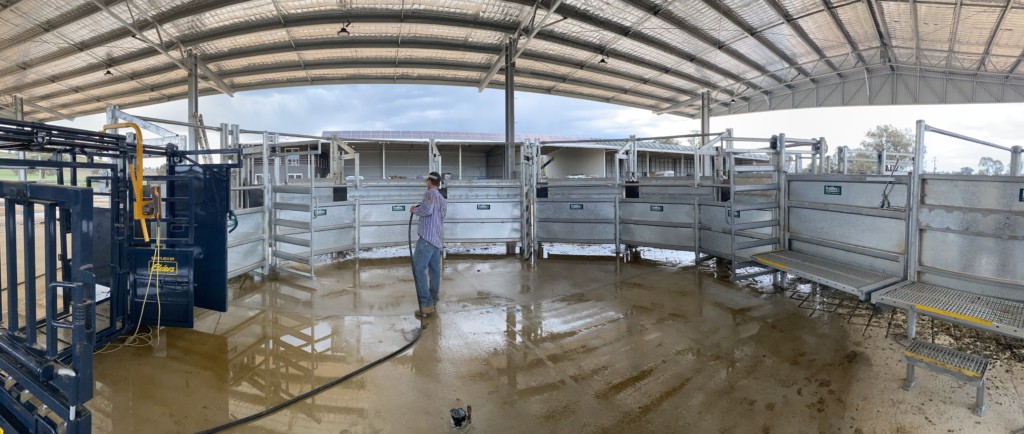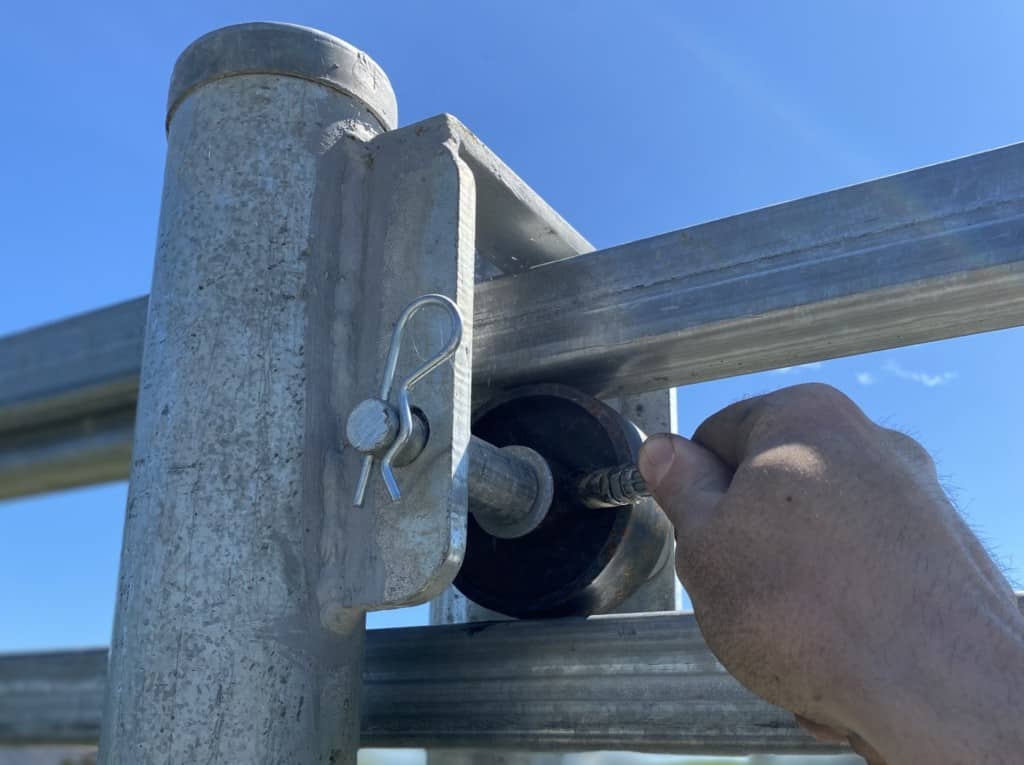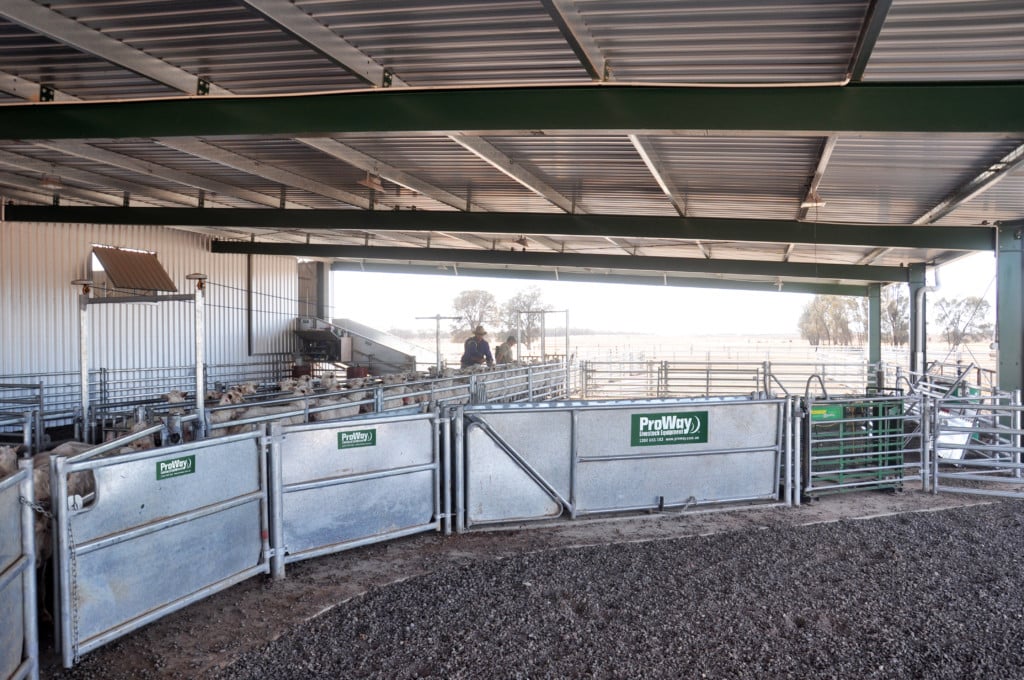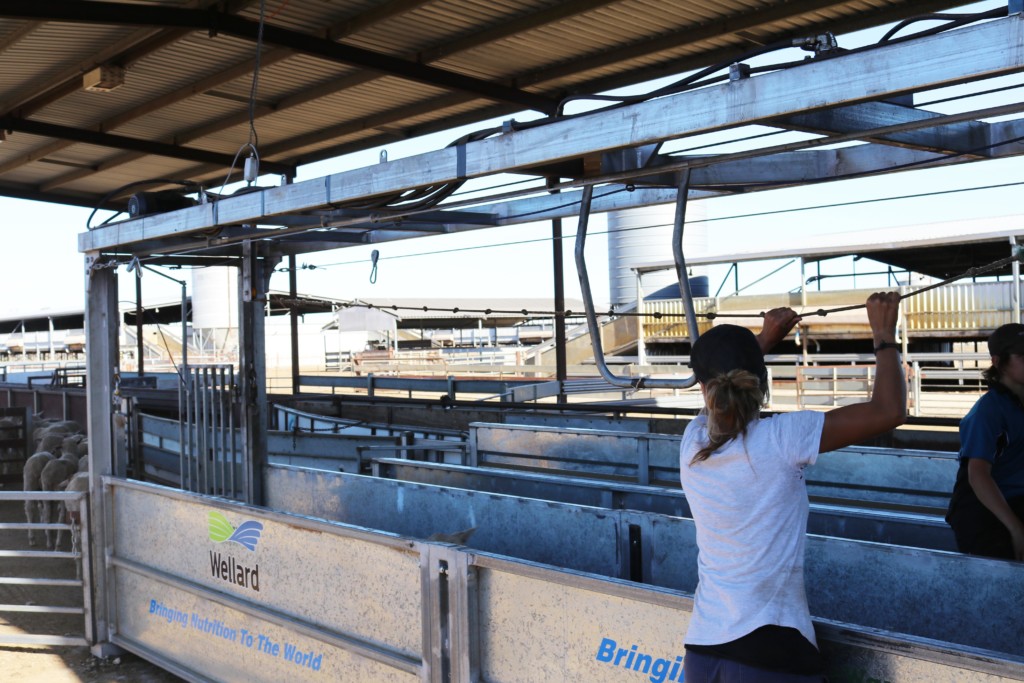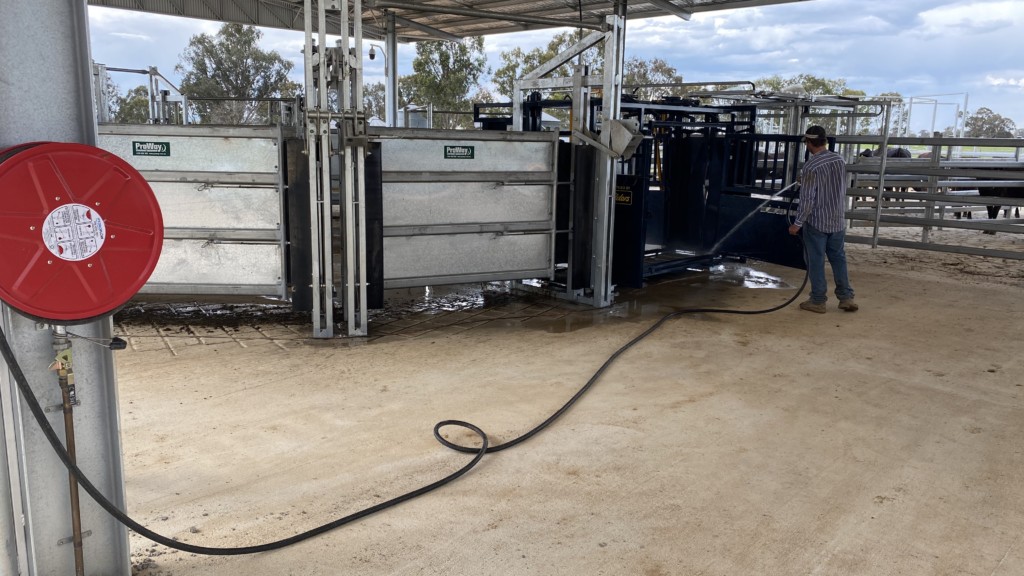Our Design, Engineering and Manufacturing Teams have always strived to apply their experience, technical knowledge and innovative product range to improve the efficiency, safety and profitability of your operation.
Our facilities are designed and built with longevity in mind, however, there are plenty of simple yet effective things you can do on site to maintain your facility for many years to come. At ProWay we strive to build low maintenance facilities, by undertaking the following you will ensure your yards and equipment remain safe and efficient for yourself, staff and livestock.
Allocating time to inspect your yards and handling equipment prior to use will provide significant benefits in terms of reduced downtime, ease of use, as well as finding potential WH+S hazards and risks that could impact your staff, contractors or stock. ProWay stockyard maintenance is not an arduous task and can be factored in as part of your pre and post yarding checklist.
Here’s our top 5 Maintenance Tips for your ProWay Stockyard Facility:
1 – Grease & lubricate catches and grease nipples
Inspecting and greasing catches and grease nipples on gates and handling equipment is a simple and quick way to ensure your equipment is working as it should when you need it most. Greasing catches and grease nipples will reduce friction on moving parts.
It is especially critical in environments that are exposed to dust, mud and the elements, and for equipment or gates which have periodic or infrequent use. Common components which feature grease points are rotary force posts (gate collars), moving components on crushes and handlers, catches, caster wheels in sliding gates and moving parts where there is steel on steel.
2 – Identify and reduce potential tripping hazards
Identifying potential tripping hazards is an easy and low cost maintenance tip that will help to improve general safety within your stockyards. Removing trip hazards from high traffic areas and elevated walkways will ensure staff, transporters and contractors can move efficiently through your facility with reduced risk of injury.
Filling any notable holes or areas of erosion with road base prior to work will help to alleviate further damage. The step created with raised slab areas can also be filled or battered with road base to minimise this issue. Concreted areas should be swept or blown out when they become uneven with built up debris. Spraying weeds in and around the facility will also reduce tripping hazards and keep the facility in good working order.
3 – Check lifting cables and safety features prior to stockwork
Equipment that features lifting cables such as Adjustable Ramps, Bulk Handlers, Guillotine Gates, and other winch operated equipment should take note to inspect lifting cables to ensure spools aren’t frayed, the lifting cable and wheels aren’t damaged and the equipment is lifting as it should. Adjustable loading ramps are fitted with a self-locking safety bar, which springs into place. This spring mechanism should also be monitored for signs of fatigue.
Identifying any lifting cable and component issues will reduce the likelihood of damage to the equipment or serious injury to staff and livestock. Regardless of any noticeable visual issues, it’s recommended to do a test lift of your equipment before use (if they’ve not been used in some time) to ensure its functioning correctly. In the event you notice signs of wear or damage to lifting components, cease use of the equipment and contact ProWay for replacement materials.
4 – Have high pressure hoses and water available for cleaning high traffic areas and equipment
Having water access in your yards can be one of the easiest ways to maintain the longevity of your facility, to improve hygiene and keep them clean and to work in. Mud, manure, husbandry associated residue and chemicals can build up over time on panels, your work surface, catches and equipment and in some cases will become corrosive and cause material faults – by having a high-pressure hose in your yards you can quickly clean down your facility after use to maintain product quality as well as cleanliness, while reducing trip hazards.
Water at the yards is also useful for stock water, working dogs, sprinklers to keep dust down, disinfecting and washing husbandry equipment. A roof over your facilities is a good source of water capture with an adjacent tank, or where possible water can be trenched to your facilities from a viable source. Where water is not able to be permanently plumbed, a scheduled wash down with a fire trailer is a good maintenance practice.
5 – Inspect key WH+S equipment features on all products
Inspecting safety features on your equipment in line with manuals and product signage is important to maintain a safe workplace. Pneumatic equipment, loading ramps, Sheep Bulk Handlers, Rotary Force safety brakes, and general ware in your facility should be monitored and addressed should issues arise. It’s recommended that manways, gates and elevated walkways are also inspected and serviced where required to ensure safe and efficient passage between yards.
Taking the time to pre-test safety equipment can save plenty of headaches prior to working stock in the yards, it will also offer peace of mind knowing you can trust your staff, contractors and animals will be protected by ProWay’s class leading safety features.
Have you got a tip or trick you’d like to share? We’d love to hear it! It will also help us to prepare our equipment and facilities for the future.
Send through an email with some images of your maintenance tip and we’ll send you some new ProWay merchandise.
Email us your maintenance tip or trick: [email protected]

